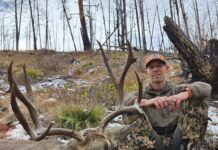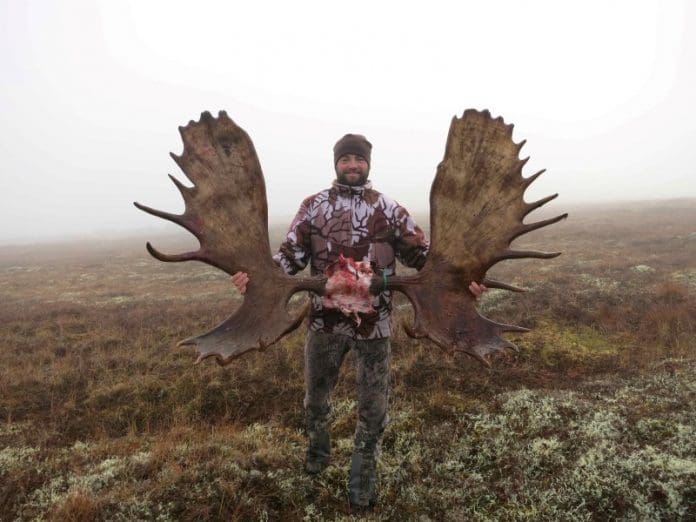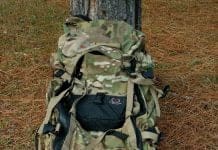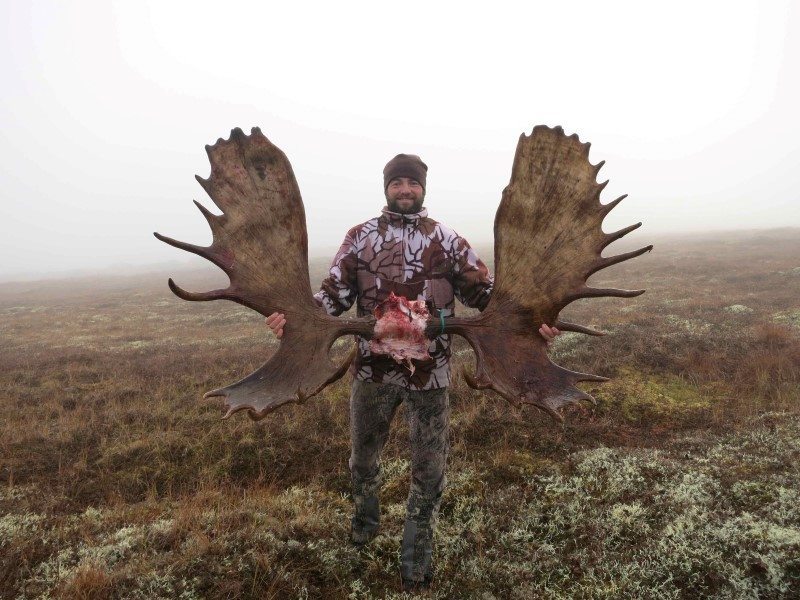
Alaska DIY Moose, The Inside Scoop Part 1
By Billy Molls, Rokslide Guest Writer
In Part I, we discussed the rewards of an Alaskan DIY moose hunt, general methods of hunting, selecting a flight service, overall costs, and tents commonly used in Alaska. Once your hunt is booked, it’s time to consider how to make your adventure, safe, successful, and enjoyable.
Hunting Techniques
Read books, watch videos, and talk to other moose hunters. They will cut your moose hunting learning curve dramatically. For all my DIY clients, I offer all-access phone consultations to answer any questions they may have on techniques, tips, and tactics. That said, once you’re in the bush, a little hunting savvy and a few basic calling techniques can often yield great results.
Calling is my favorite, and often the most effective way to hunt moose. However, if you’ve hunted elk successfully in the West, don’t make the mistake of thinking it’s exactly the same. The key to calling moose is to be patient. Countless times I’ve called to a bull that I’d glassed up miles away. I would try every call I could think of. He would lift his head and look, but he wouldn’t budge. All the sudden, after calling to him for several consecutive days, the mood would strike him just right, the bull would march right in and my hunter would shoot him at less than 100 yards (the ultimate calling a bull right to the airstrip or gravel bar so you don’t have to pack it anywhere!)
Timing is everything when it comes to calling. Early morning, before the thermal winds kick up, is when I do 90% of my calling. If you have a good point of observation with moose sign the area, give it at least 2-3 days before moving to a new location. If you’re hunting a river where you can’t see anything but what is in front of you, the timing of your calls is much more difficult to determine. But the key is to be patient. Response to calling is often more than 24 hours.
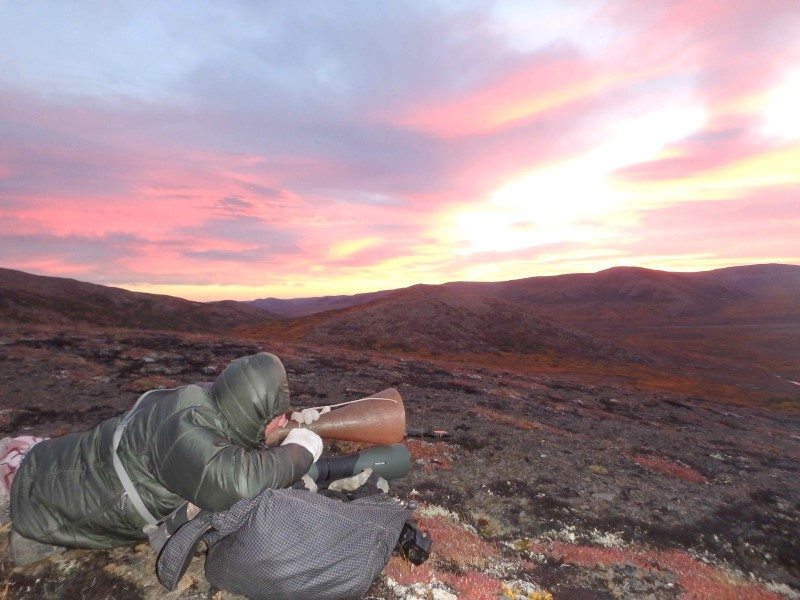
Billy calls in the still dawn air to a giant 68-inch moose he glassed up two miles away
Most of my calls are cow moans. A “Bull Magnet” is a good tool for this as well as brush raking. When a bull is responding, I use whatever call is working. The only time I switch to another call/vocalization is if the bull hangs up. If he continues to hang up, if possible, move closer to the bull and call again. If that doesn’t work, call more aggressively. If a bull doesn’t see, smell, or hear you, they won’t bolt off. They are quite curious and social during the rut. (elk and turkey hunters understand this concept, and often make pretty good moose hunters.)
If a bull is curious enough to come part way and he doesn’t have cows with him, try different things. If you don’t get him and he doesn’t wind you but simply walks off, let him go. Don’t call to him relentlessly like the first girl who dumped you in junior high school. Let him go. There’s a reasonable chance he might be more responsive another day.
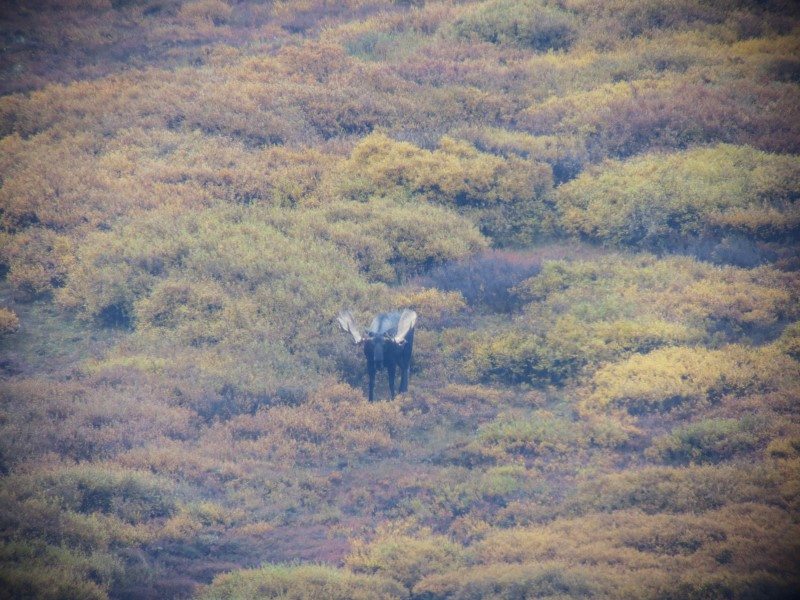 The 68-inch bull comes to Billy’s cow calls
The 68-inch bull comes to Billy’s cow calls
If a bull is coming to your calls don’t call again until he stops for several seconds. If you can’t see him but he is grunting, call approximately as often as he grunts. If he grunts every second or two, that means he’s hot. Don’t bother calling, just find a good position and get ready.
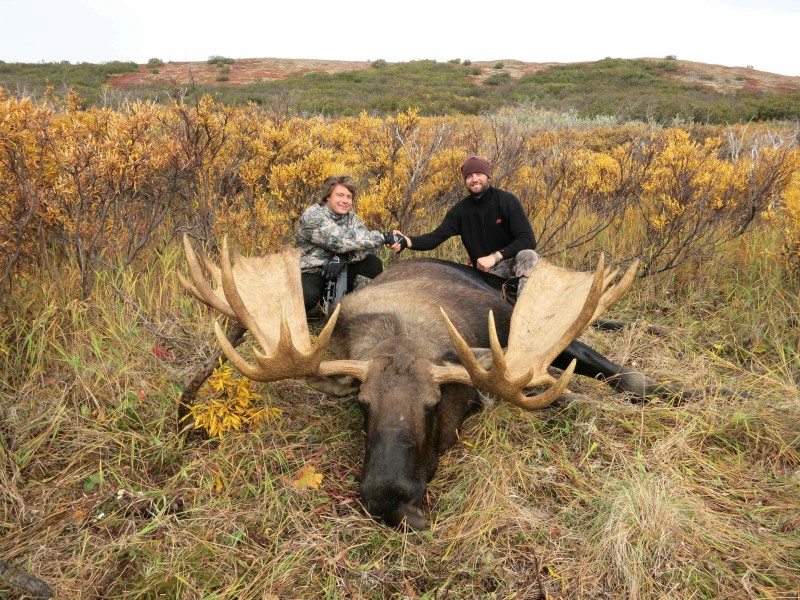
Billy and his client pose with the 68-inch bull taken a half-mile from camp
Bulls with cows are not easy to kill. Typically they stay in cover, where multiple eyes, ears, and noses are hard to sneak up on. I’ve never successfully called a big bull completely away from an established harem. I’ve managed to sneak within 400 yards of a harem and then lure the bull just far enough out of the cover to kill, but that’s the only success I’ve known when calling a bull with cows. I’ve found it far more successful to remain quiet and stalk bulls with cows. On two occasions, after unsuccessfully trying to call a herd bull away from his cows, I orchestrated moose drives. Both times it worked wonderfully (one of those bulls is pictured in the lead photo.) No two hunting scenarios are the same. Sometimes you just have to be creative and trust your instincts.
BUTCHERING
When a bull is down, the pictures are taken, and the celebration ends, the head scratching starts. Skinning and butchering a large bull typically takes me, with the aid of my client, about two hours of intense labor. Inexperienced hunters can expect to double that time. After your moose is broken down you have nearly 1,000 pounds of meat, cape, and antlers to deal with. Without discipline and planning, a foolhardy hunter can turn his dream hunt into a nightmare. Here are a few tips that will help a gung-ho DIY moose hunter.
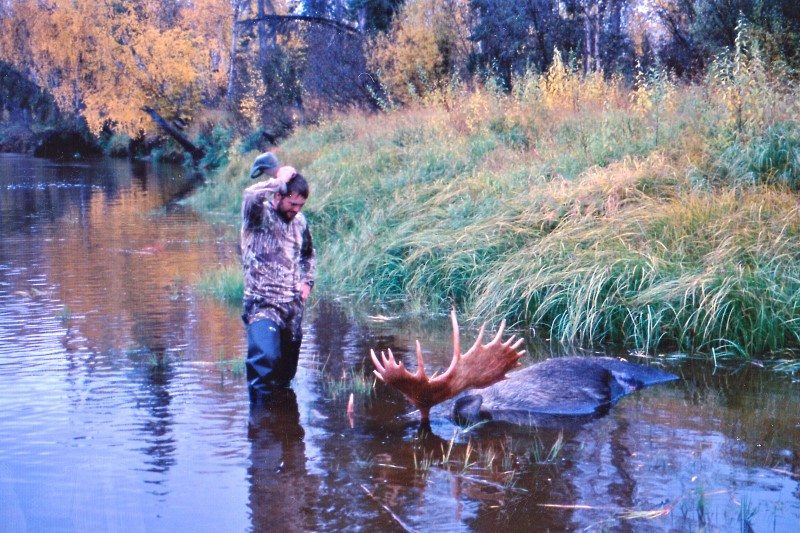
Moose don’t always die in convenient places
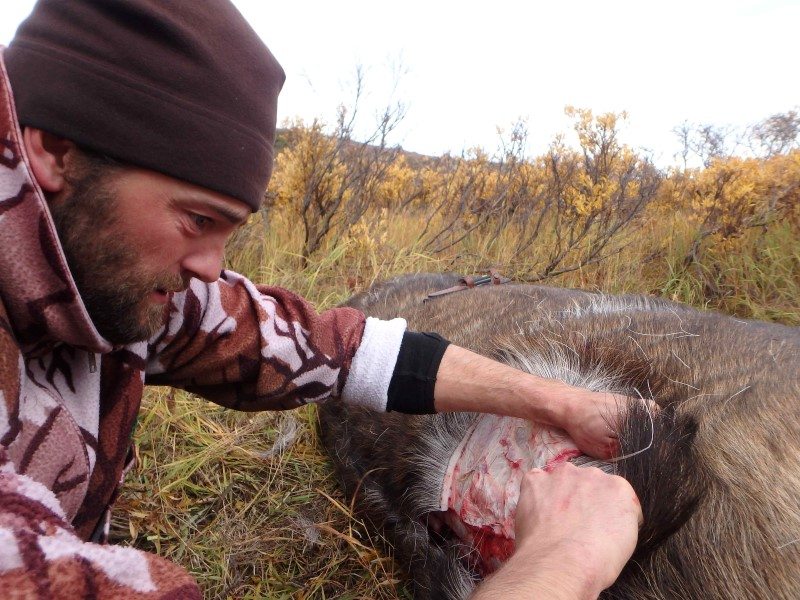
Moose hide is incredibly thick, calling for multiple sharp knives. Billy uses Havalon knives with #60 and #70 blades. He also prefers Victorinox knives for butchering as well as skinning
1) Be honest about your physical capability. “I don’t care how far away that moose is,
even if it takes me a week to pack it out….,” is a common mantra among inexperienced moose hunters. Moose country can be unbelievably unforgiving and sometimes almost impossible to traverse with a 150-pound hindquarter on your back. A mile-long pack in wet, boggy, and, or, brushy terrain with a heavy load is like hell on earth. If you’re not certain you and your party can extract a bull within 48 hours, you shouldn’t be shooting it. Your chance of bear problems, meat spoilage, cape spoilage, go up drastically if you can’t retrieve your animal in less than 48 hours. Be smart. You owe it to the animal, yourself, and your hunting partner(s).
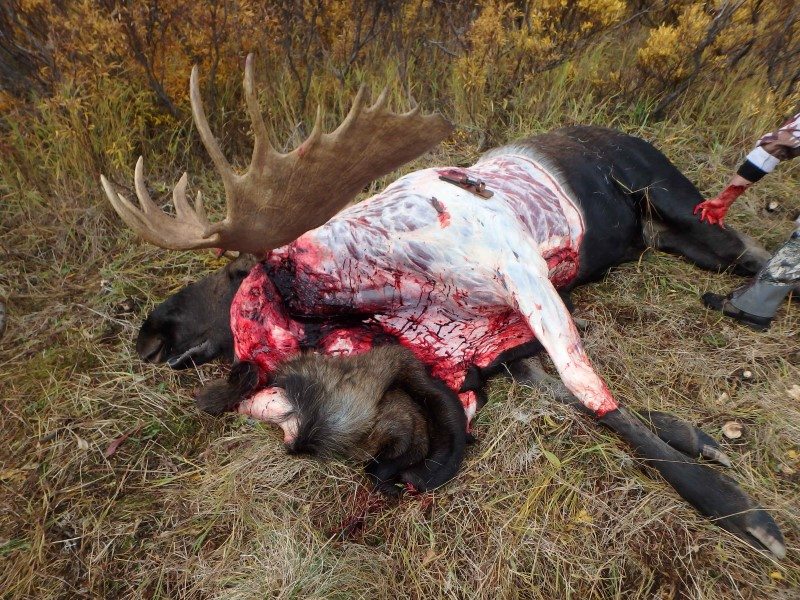
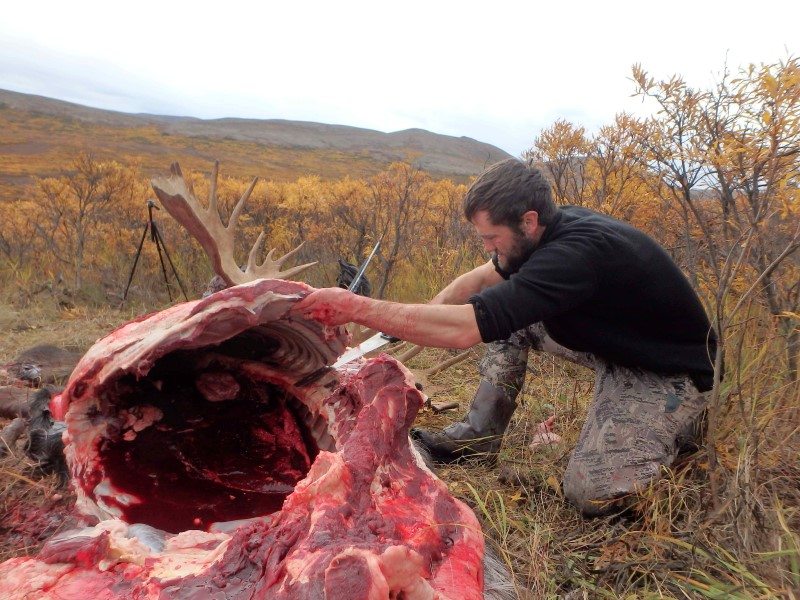 Butchering an Alaskan bull moose is serious work, requiring an established plan long before a bull hits the ground
Butchering an Alaskan bull moose is serious work, requiring an established plan long before a bull hits the ground
2) Have at least four lightweight game bags (“Alaska Game Bags” are excellent) and two 8X10 tarps with cord in your pack at ALL times. Butcher the moose immediately after shooting it. If a bull is taken at dark be sure to butcher at least one side of the animal, then take the entrails out, flip the carcass onto a log or brush (always leave forelegs attached until the entire butchering process is done. These are your levers to flip the animal), skin the other side and cover it loosely with a tarp. Place the other bags of meat atop brush so air can circulate around them and cover until morning. Any hide left attached to the flesh will greatly reduce the meat cooling, so be sure everything, particularly the neck and hindquarters, is skinned.

Never cut the leg off at the hock until butchering is complete. The long legs work as levers to maneuver the moose
3) Bring trekking poles. Leki and Black Diamond are good brands. (I haven’t seen good results with Cabela’s sticks.) Walking sticks will be an incredible asset when packing heavy loads across uneven terrain. I typically carry a standard 8X10 tarp with me at all times for a glassing fly. A quality set of 145cm trekking work great as uprights in the front corners of the tarp. I don’t hunt Alaska without this.
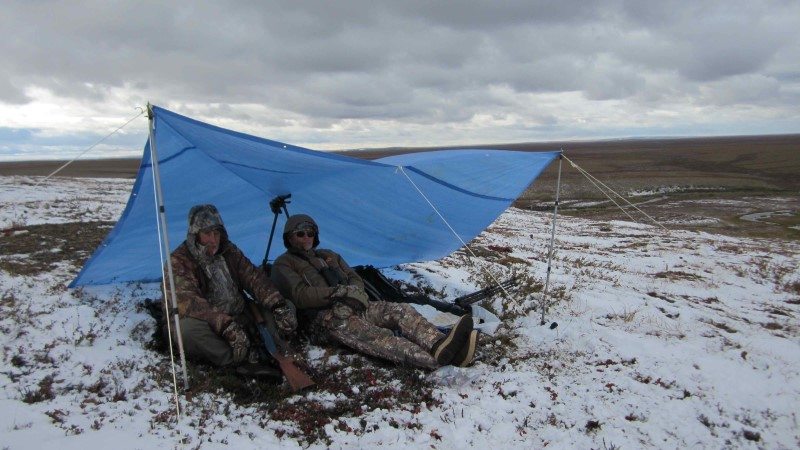
Not only will a lean-to shelter keep precipitation at bay, but it also serves as a great wind break
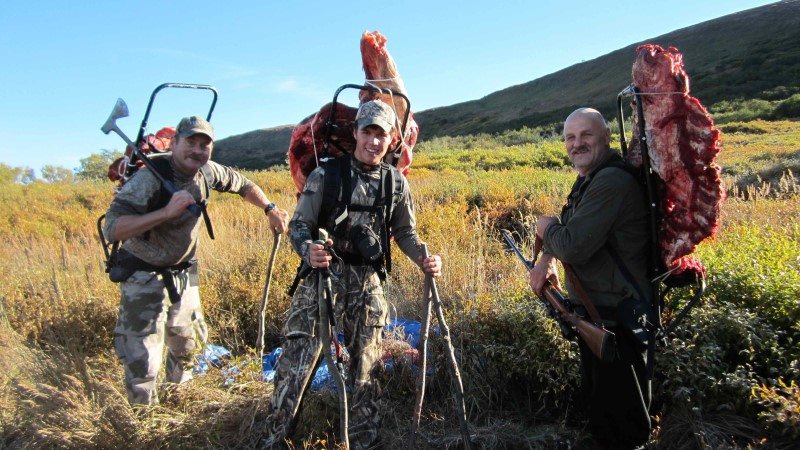
Trekking poles are invaluable when packing out heavy loads of moose meat over uneven terrain. Green willow sticks also work in a pinch
4) I’m often asked about internal and external-frame packs. I’ve used (and still use) Barney’s frames with bag for years. I used a Mystery Ranch pack for a season, which worked fine (I currently run a Stone Glacier Sky 7400 pack for all my sheep, caribou, and grizzly hunts.)
I like external packs for quick use, large volumes of gear, and lashing horns/antlers. As a guide, I find them to be more utilitarian in nature. Most young moose packers, who are packing moose almost every day for a month, use an external frame with no bag to cut down on weight. A good external frame is superior for this option.
If I were a DIY Alaska hunter who had a quality external frame, I would probably use it for a moose hunt. That said, if budget’s an issue, I wouldn’t go buy one. Most of today’s higher quality internal frames will work just fine for the DIY moose hunter, particularly if it has a load shelf, whereby you can detach the bag. I recently had a client pack out a moose front quarter with a Stone Glacier pack with no problems at all.
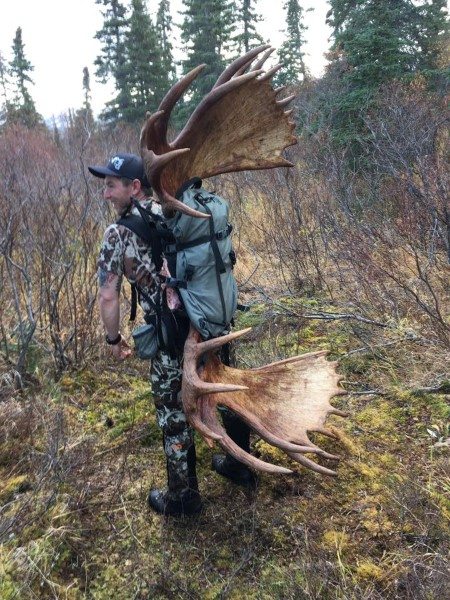
A happy moose hunter packs out his giant bull moose using a Stone Glacier pack.
Unless my guided clients and DIY hunters are already partial to an external frame pack, I recommend they use internal frame packs. I believe they are more versatile.
UNIQUE OR COMMONLY OVERLOOKED GEAR YOU’LL WISH YOU HAD ON YOUR ALASKAN DIY MOOSE HUNT:
1) A reliable means of communication. The DeLorme inReach is quite popular. It seems Millennials and others who are more tech-savvy than me use these a lot. I preferred good “old-fashioned” satellite phones. In my experience Iridium phones is far superior to Globalstar. Be sure to get a spare battery when you rent one. One spare battery will last me a month. Unless you’re a chatty phone princess, you shouldn’t need to rent a solar charger for your hunt.
2) A packable camping chair. I like Thermarest or Crazy Creek. Anytime I know I’ll be doing a lot of glassing I pack one with me. They help keep me focused on glassing and are handy in the tent on weather days.
3) Quality footwear. Don’t skimp on boots. In the past 20 years I can safely say I’ve worn out well over $10,000 worth of boots. I’ve tried almost all of them; Meindl, Hanwag, Kennetrek, Lowa, Scarpa, and others are good brands. Proper fit is key. A pair of Crocs or slip-on shoes are nice in the tent or around camp.
I’ve found LaCrosse to be the best hipboots. Wiggy’s Waders are nice and lightweight, but they’re only good for about 5 creek crossings before they puncture; after that they don’t even make good toilet paper. Sourdough Slippers are much more durable, but weight is significant. If you’re doing a float hunt, top quality breathable chest waders, or at a minimum waist-high, are a must.
4) Bring a weapon you’re familiar with. Stainless synthetic rifles are the Alaskan standard, but if you have a weapon you know, don’t mind beating up, and are comfortable with, bring it. I like Nosler Partition, Swift A-frame, and Barnes TSX ammunition for moose (and they all double nicely as bear protection.) I’m an archer, but far from an expert. I won’t offer technical advice, but I will say this, for those who want to shoot a bull moose with their bow and bring a rifle “just in case”, 90% of those hunters will shoot their moose with the rifle. If you’re going on a once in a lifetime hunt, don’t stress yourself out over which weapon do I use. It’s your hunt, but if in doubt, I suggest leaving the bow at home.
5) A good, long book. You should plan to be stuck in your tent or marooned someplace without Internet or a liquor store for roughly 20% of your hunt. Something to occupy the mind will be an asset.
6) GET GOOD RAINGEAR! If you’re telling yourself my old raingear should be good enough for Alaska, it’s probably not. I’ve used the rubber commercial fisherman stuff for years. It’s good at keeping the rain off you, but half the time you’re wearing it you sweat harder than it’s raining! Year’s back, I switched to Sitka raingear. It was a HUGE improvement. A few years ago, I started using Firstlite’s “Stormtight” It was packable and lightweight. I loved it for sheep hunting, but it just didn’t shed enough water for my moose and bear hunts where I was less active, and often stuck out glassing through nasty storms. Then Firstlite came out with the SEAK jacket, and everything changed. I love that jacket! It stacks right up to Sitka’s comparable models in breathability and waterproofness, and it’s roughly half the price! I was glad to hear Firstlite is also coming out with a SEAK pant as well. I don’t think you’ll find a better quality set of rain gear for the price for your Alaskan hunt.
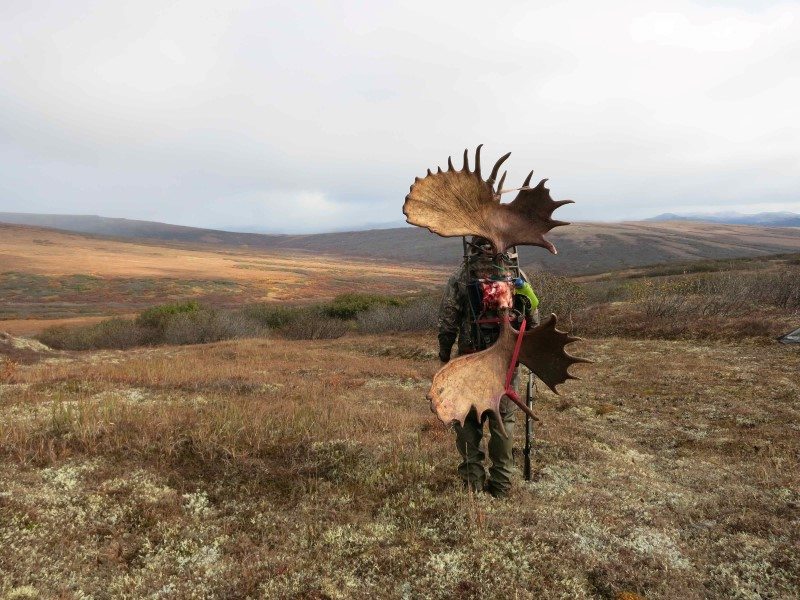
By Alaska law, antlers can only be packed out after the meat. It is a joyous occasion when the packing is complete.
An Alaska moose hunt is perhaps the greatest DIY adventure available to those of us in the lower 48. Start saving, start planning, and make your Alaskan dream hunt a reality.
Good Hunting,
Billy Molls
It’s not too late to book your own 2017 Alaskan DIY moose hunt with help from an expert! Billy still has a couple great DIY Alaskan moose hunts with OTC tags for 2017 that won’t last long, and it’s not too early to start planning for 2018. To contact Billy for more information on DIY moose and caribou, or other guided hunting opportunities in Alaska click here: http://billymollsadventures.com/services/alaska-hunting-adventures
To watch a sample of some of Billy’s Modern Day Mountain Man Alaska hunting videos click here
To see more photos of Billy’s Alaskan hunting adventures click here
You can ask Billy questions or discuss this article here




